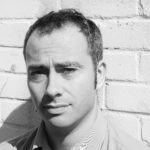
The Fighting Téméraire tugged to her last Berth to be broken up by JMW Turner, 1838
The English landscape painter JMW Turner said his work was not to be understood but “to show what such a scene was like”. Now global-warming experts are taking advantage of his prosaic nature to improve their predictions of the consequences of climate change.
The scientists are analysing the striking sunsets painted by Turner and dozens of other artists to work out the cooling effects of huge volcanic eruptions. By working out how the climate varied naturally in the past, they hope to improve the computer models used to simulate global warming.
The team, at the National Observatory of Athens, is using the works of old masters to work out the amount of natural pollution spewed into the skies by eruptions such as on Indonesia’s Krakatoa in 1883. Reports from the time describe stunning sunsets for several years afterwards, as the retreating light was scattered by reflective particles thrown high into the atmosphere. By studying the colour of sunsets painted before and after such eruptions, the researchers say they can calculate the amount of material in the sky at the time.
Christos Zerefos, the research leader, said: “We’re taking advantage of the attitudes of famous painters to portray real scenes they were looking at. This is the first attempt to analyse this old art in a scientific way, and tells the story of how our climate has varied naturally in the past.”
The results will feed into the scientific study of a phenomenon called global dimming, which is caused by air pollution blocking sunlight. Some experts believe this has acted as a brake on global warming, and that climate change could accelerate as air pollution from industry is reduced.
Zerefos and his team looked at natural global dimming caused by volcanoes, the results of which can be severe. The eruption of Mount Tambora in Indonesia in 1815 threw out so much material that it triggered the notorious “year without a summer”, which caused widespread failure of harvests across Europe, resulting in famine and economic collapse.
The team found 181 artists who had painted sunsets between 1500 and 1900. The 554 pictures included works by Rubens, Rembrandt, Gainsborough and Hogarth. They used a computer to work out the relative amounts of red and green in each picture, along the horizon. Sunlight scattered by airborne particles appears more red than green, so the reddest sunsets indicate the dirtiest skies. The researchers found most pictures with the highest red/green ratios were painted in the three years following a documented eruption. There were 54 of these “volcanic sunset” pictures.
Zerefos said five artists had lived at the right time to paint sunsets before, during and after eruptions. Turner witnessed the effects of three: at Tambora in 1815; Babuyan, Philippines in 1831, and Cosiguina, Nicaragua, in 1835. In each case, the scientists found a sharp change in the red/green ratio of the sunsets Turner painted up to three years afterwards.
Writing in the journal Atmospheric Chemistry and Physics (ACP), the scientists say the redder sunsets seen in paintings “can be tentatively attributed to the volcanic events, and not to abnormalities in the colour degradation due to age, or other random factors affecting each painter’s colour perception”.
The scientists used the red/green ratios to estimate the amount of airborne dust produced by each volcano. The results, they say, are remarkably similar to estimates prepared from historical observations, early measurements and material found in ice cores.
Zerefos’s team is now talking to the Tate museum in London about repeating the study with 40 paintings from the 20th century, to see whether artists have captured the effects of pollution on sunsets since the industrial revolution.
Big bangs
1783 — Laki, Iceland. Volcanic eruption spread a sulphurous haze across western Europe, killing thousands.
1816 — Tambora, Indonesia. Eruption killed 10,000 people directly and 66,000 due to starvation and disease during the “year without a summer” that followed, when temperatures plunged and harvests failed.
1883 — Krakatoa, Indonesia. Loudest recorded bang in history. At least 36,417 people died. Average global temperatures dropped by 1.2 degrees Celsius.
1991 — Pinatubo, Philippines. Killed 300 people. About 17 million tonnes of sulphur dioxide went into the atmosphere, reducing sunlight by 5% and global temperatures by 0.4 degrees Celsius.
Copyright Guardian News & Media Ltd 2007
